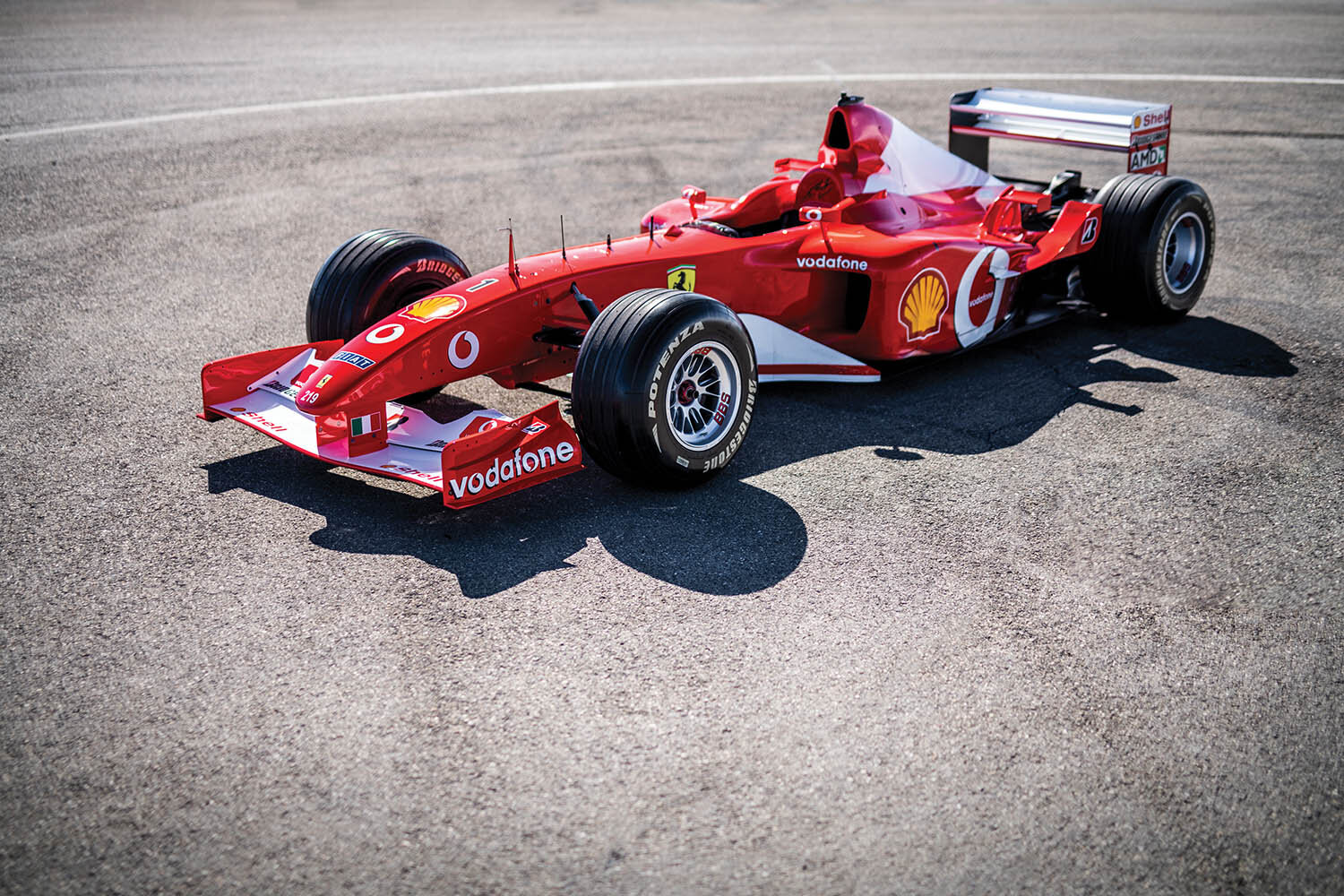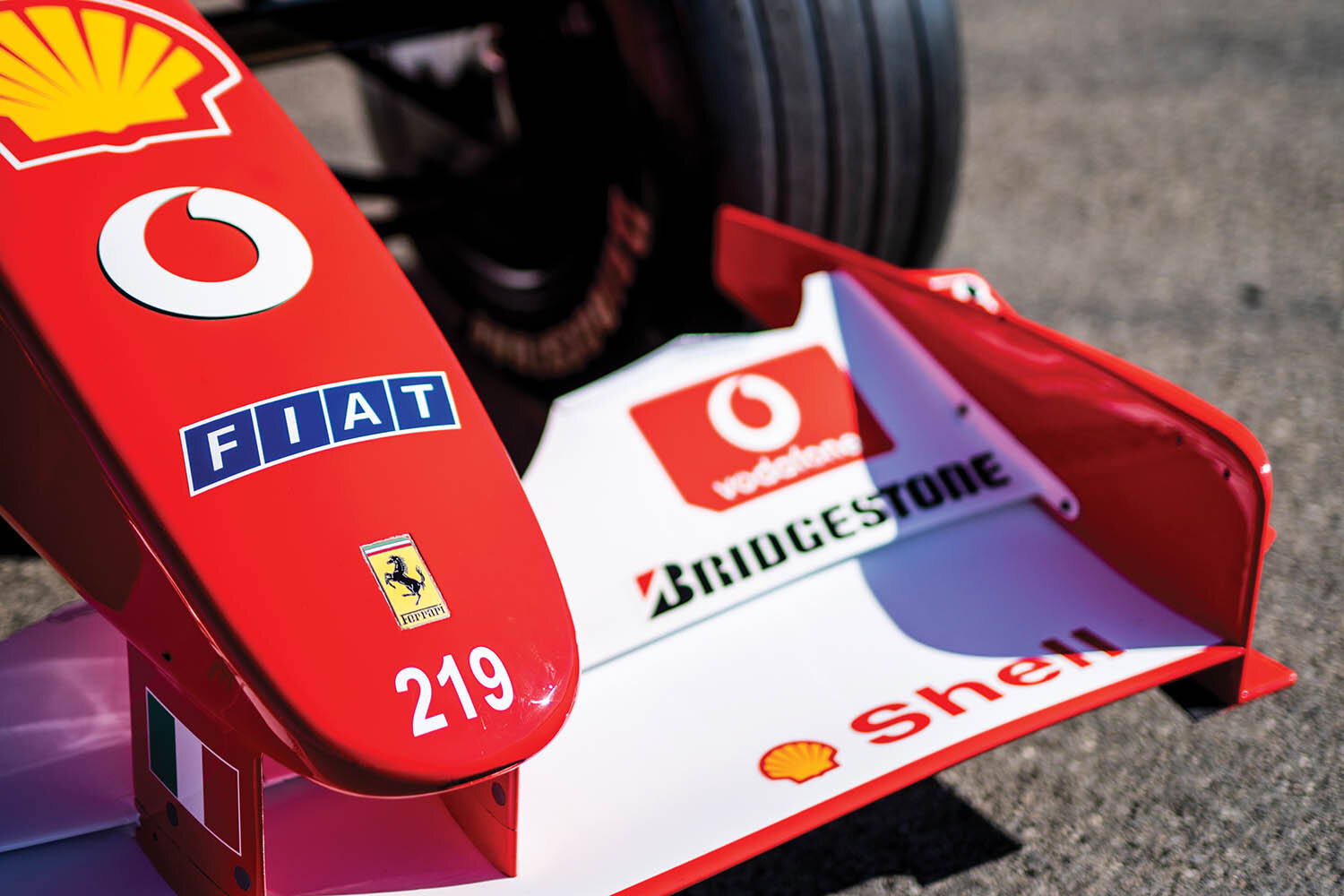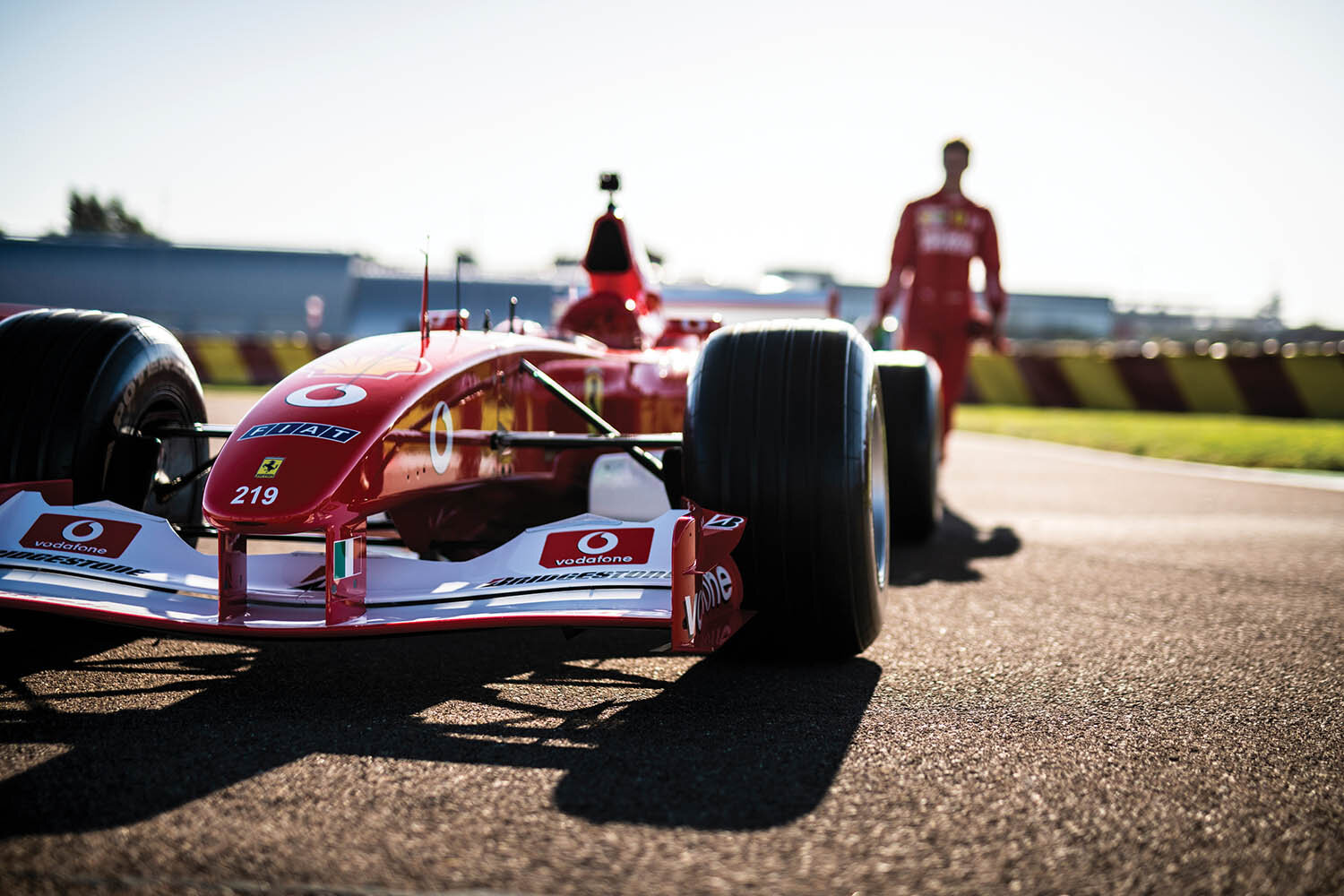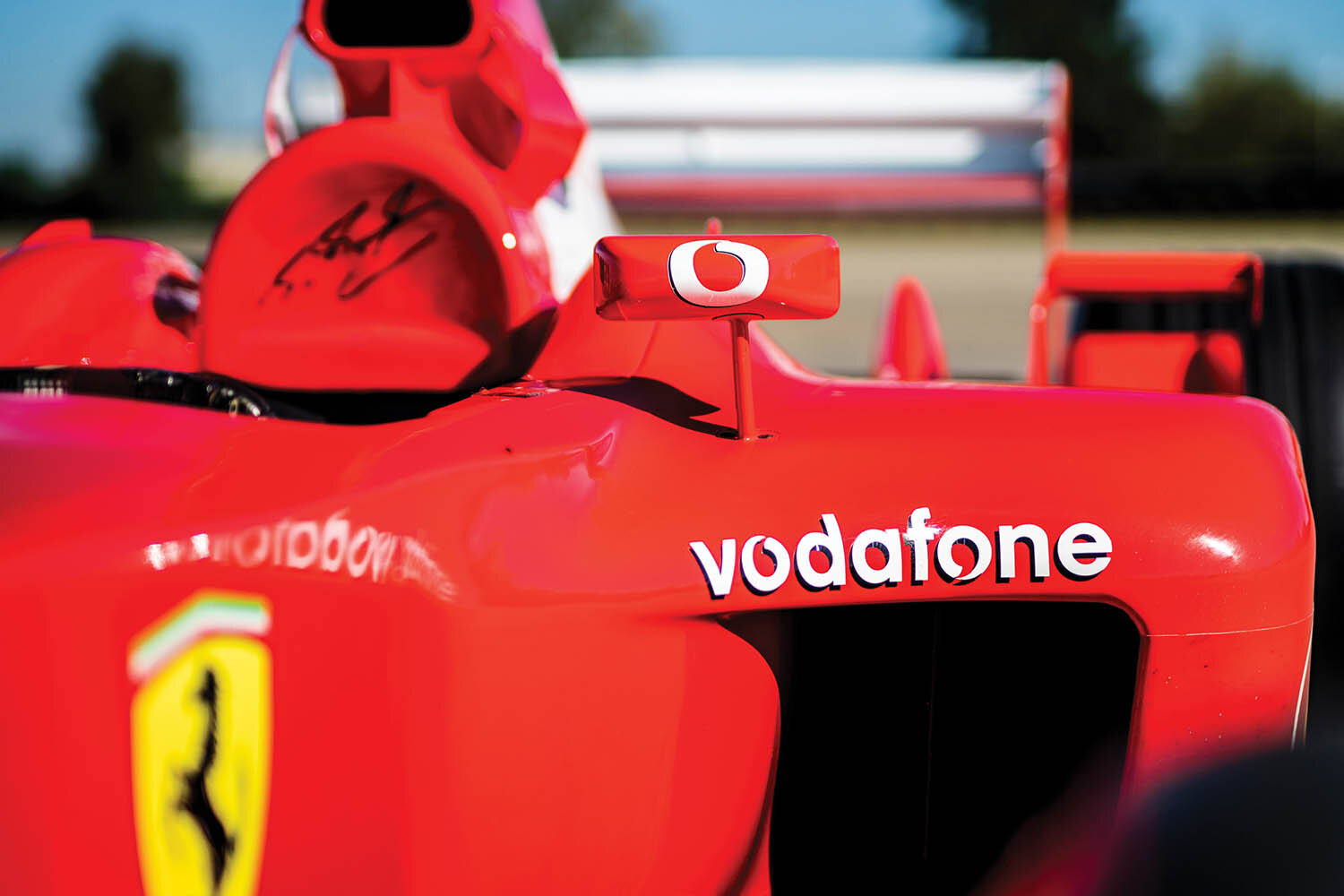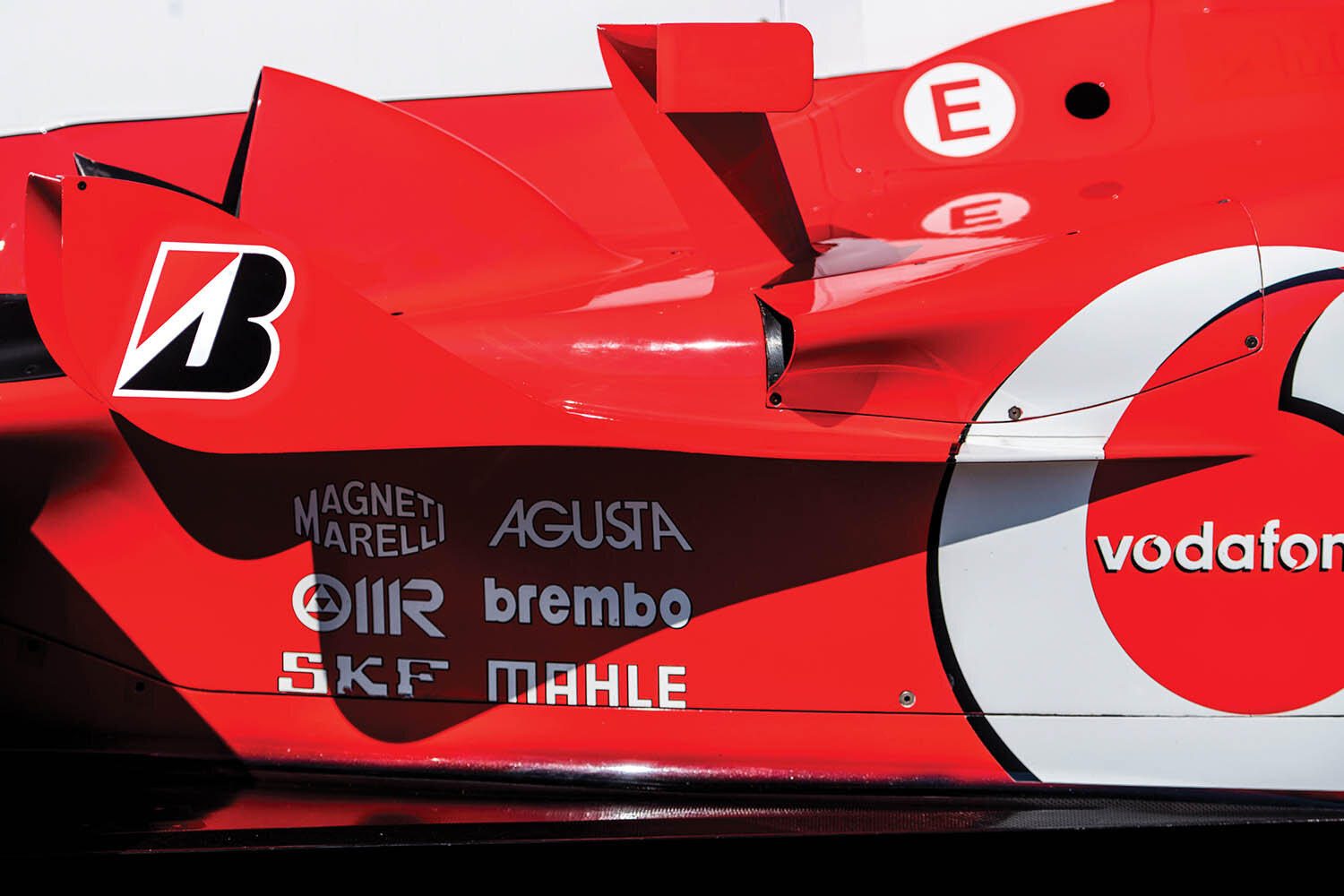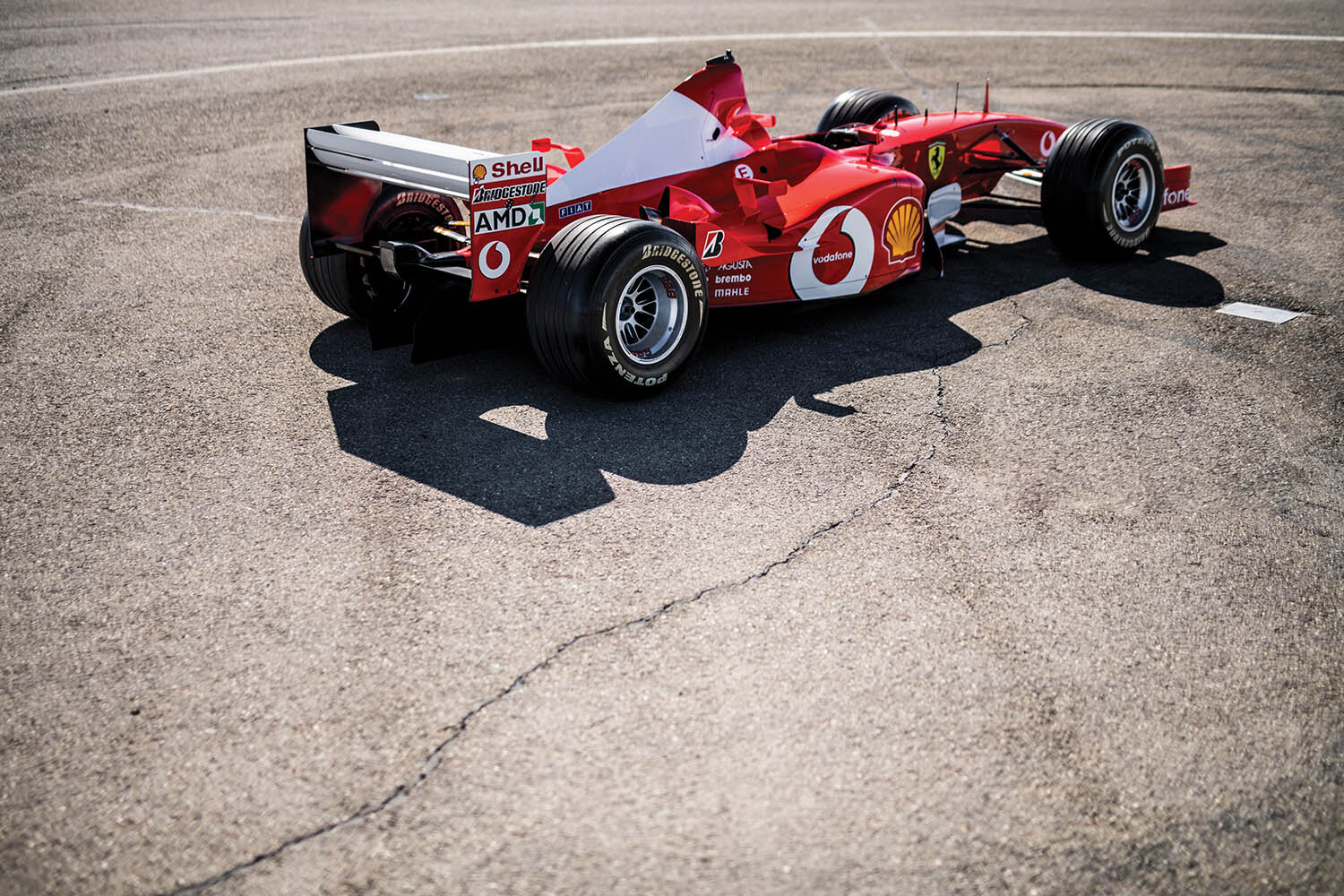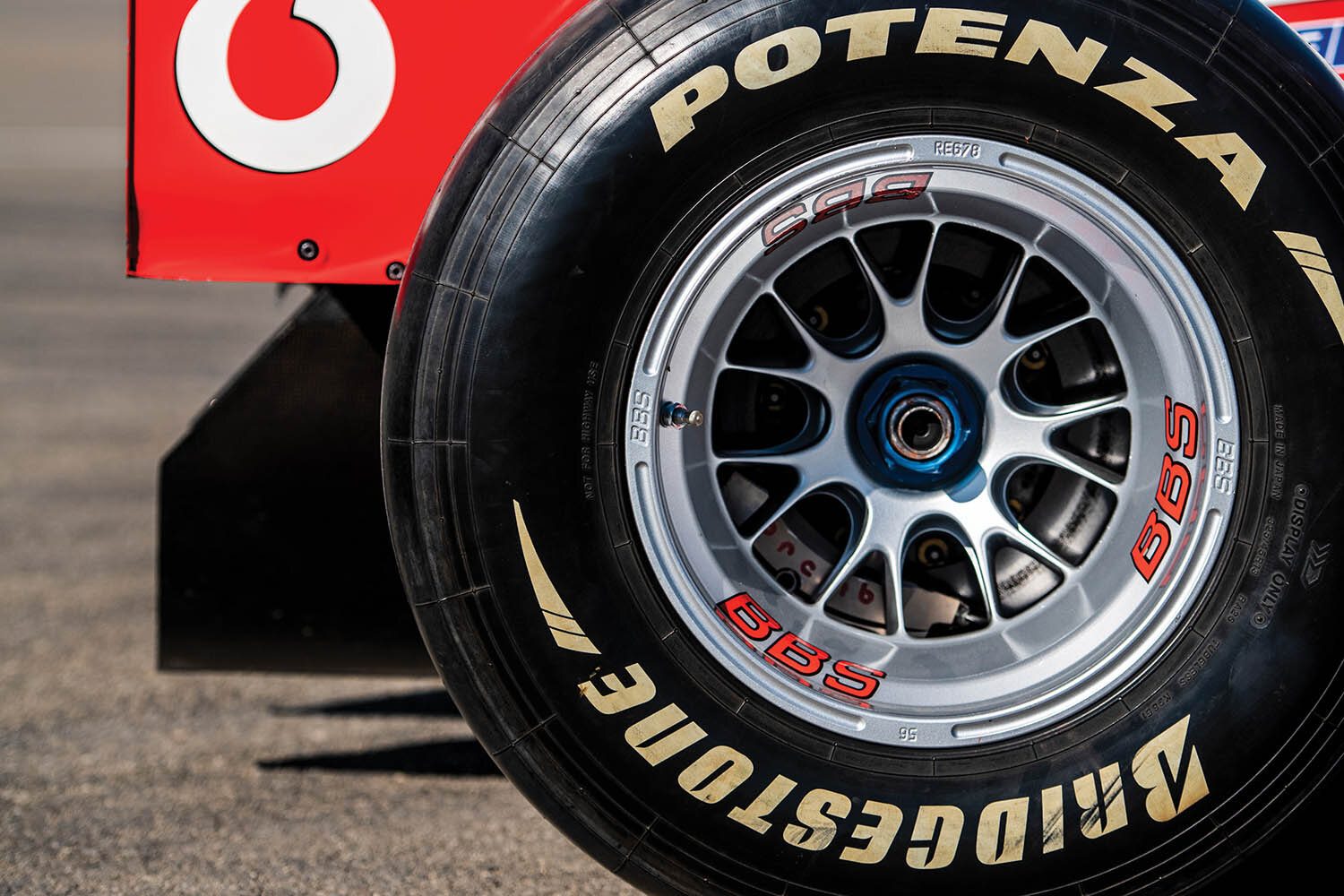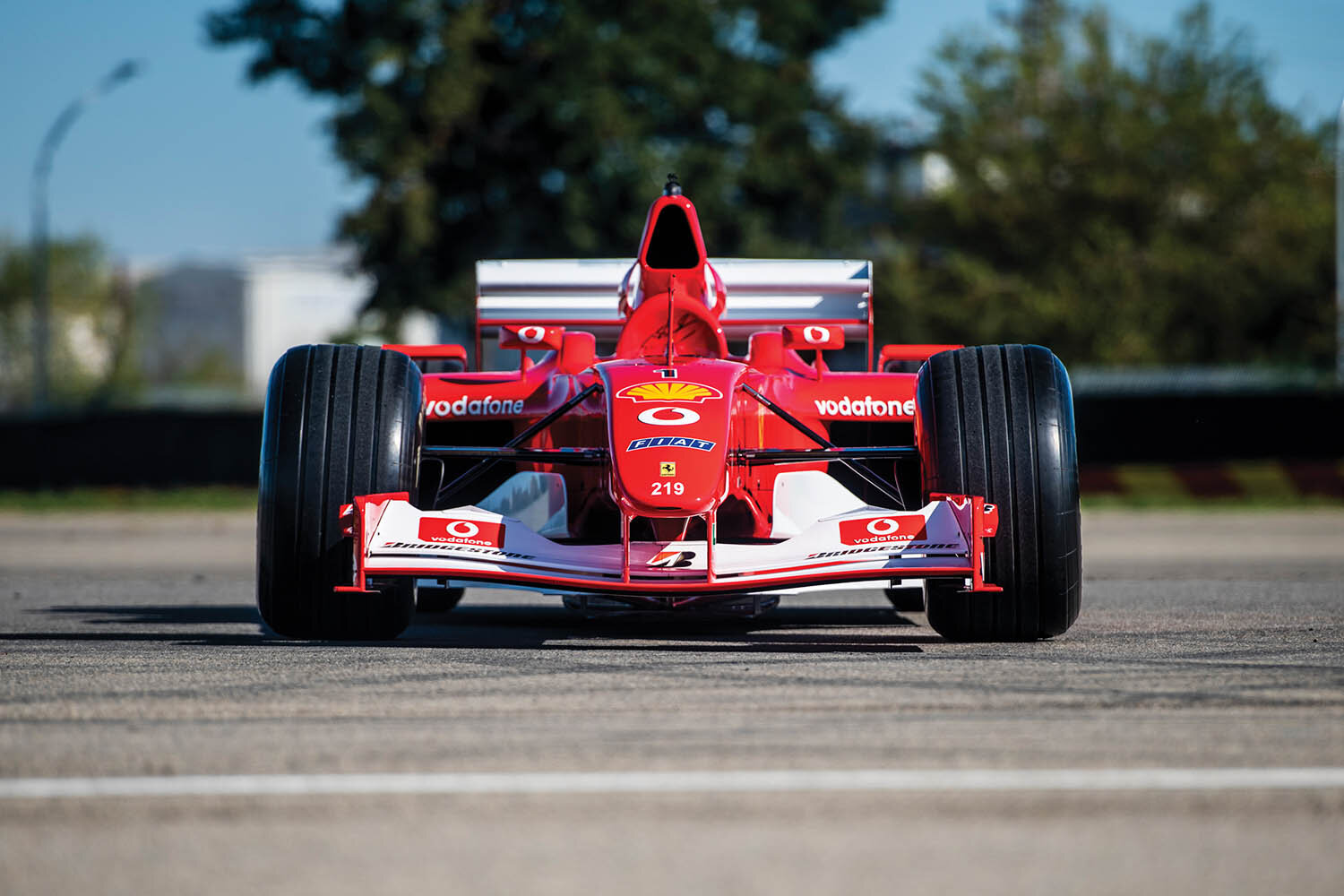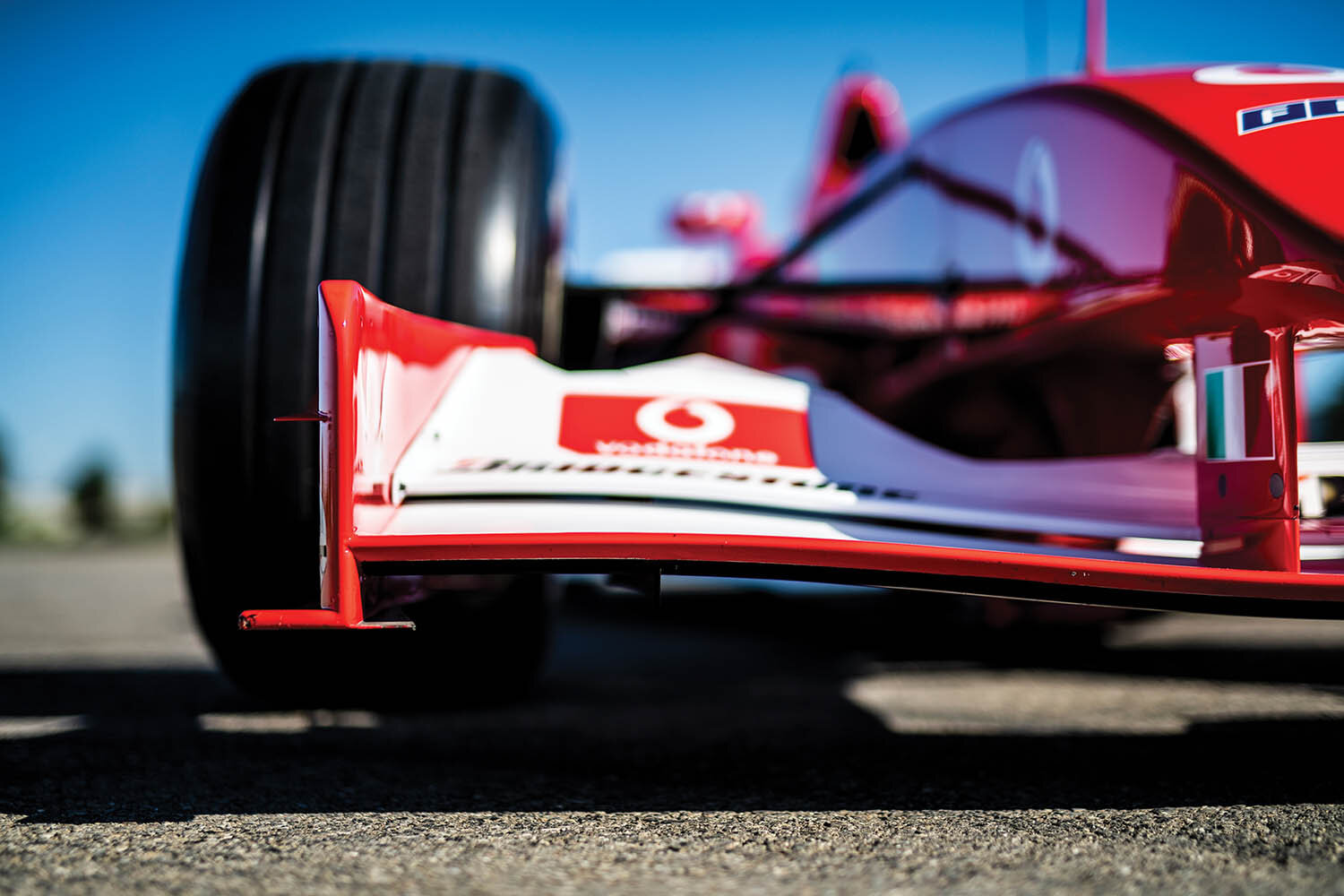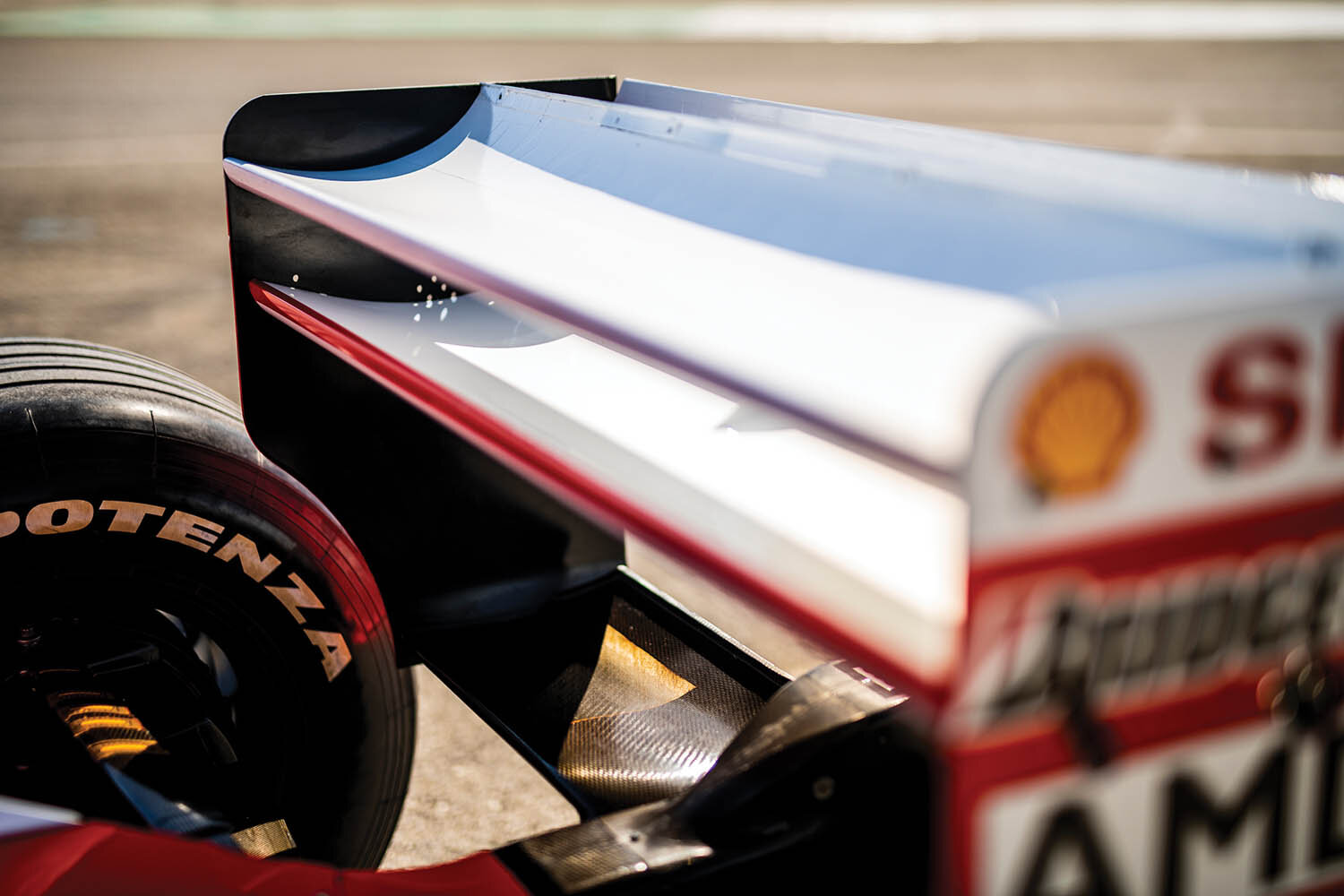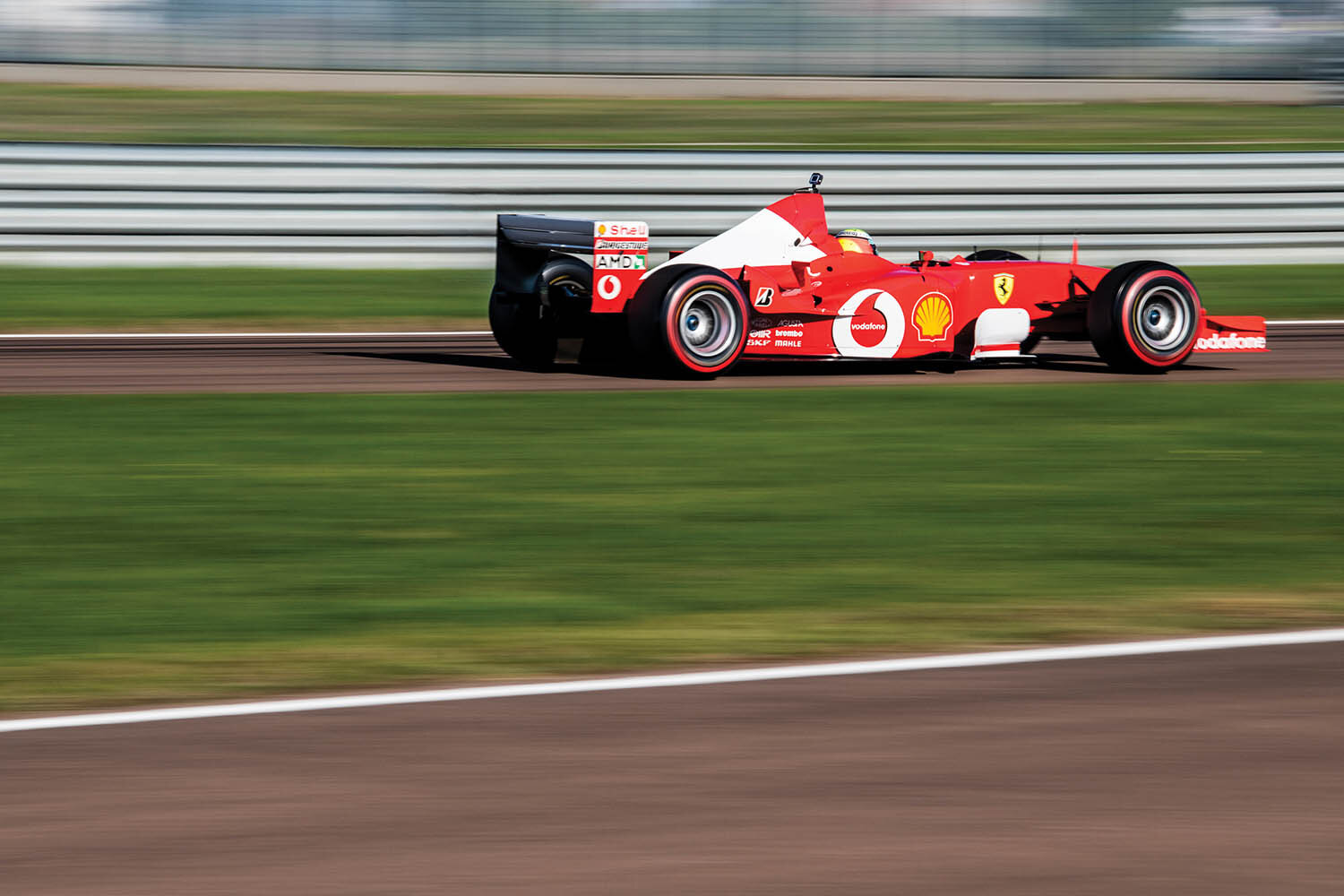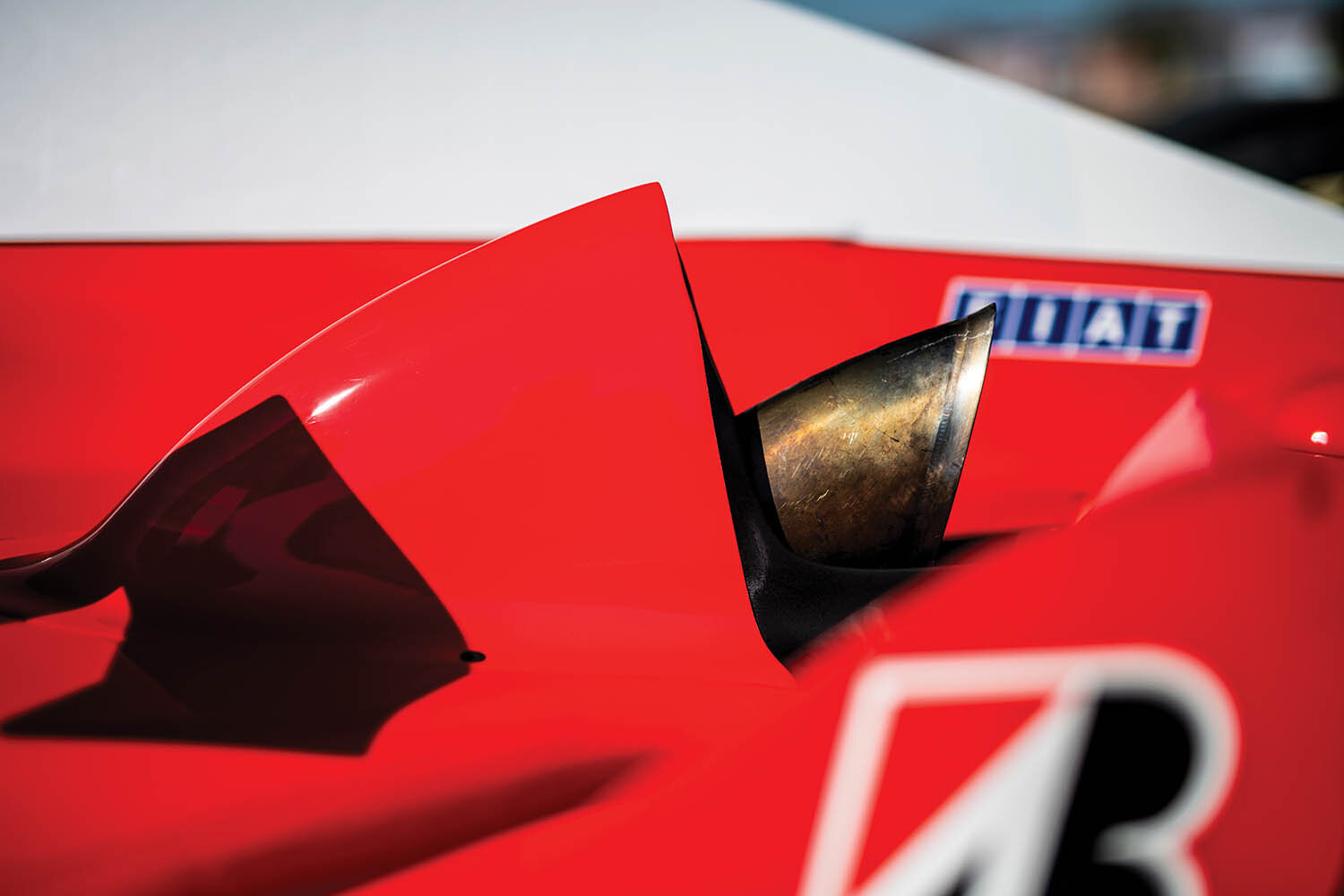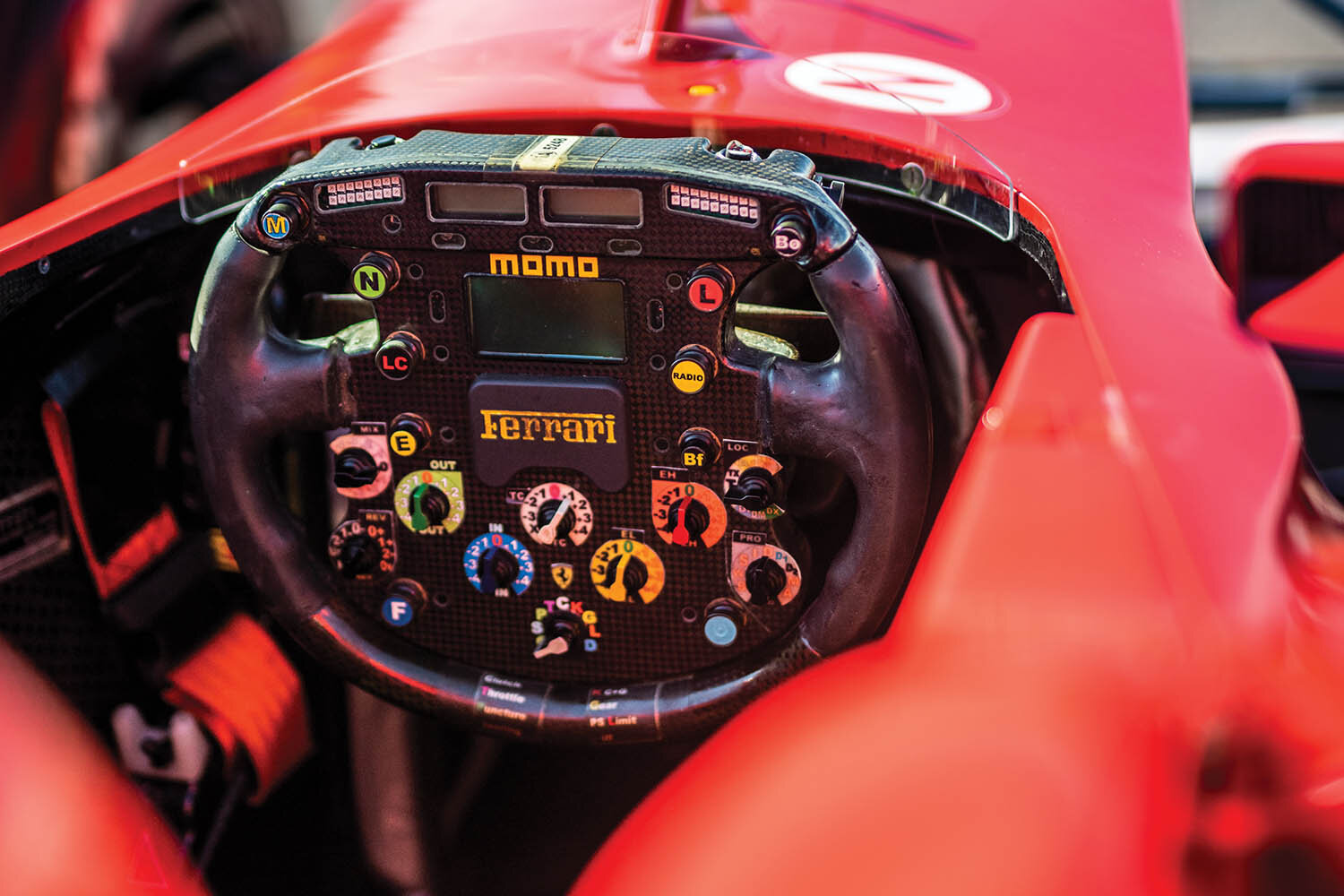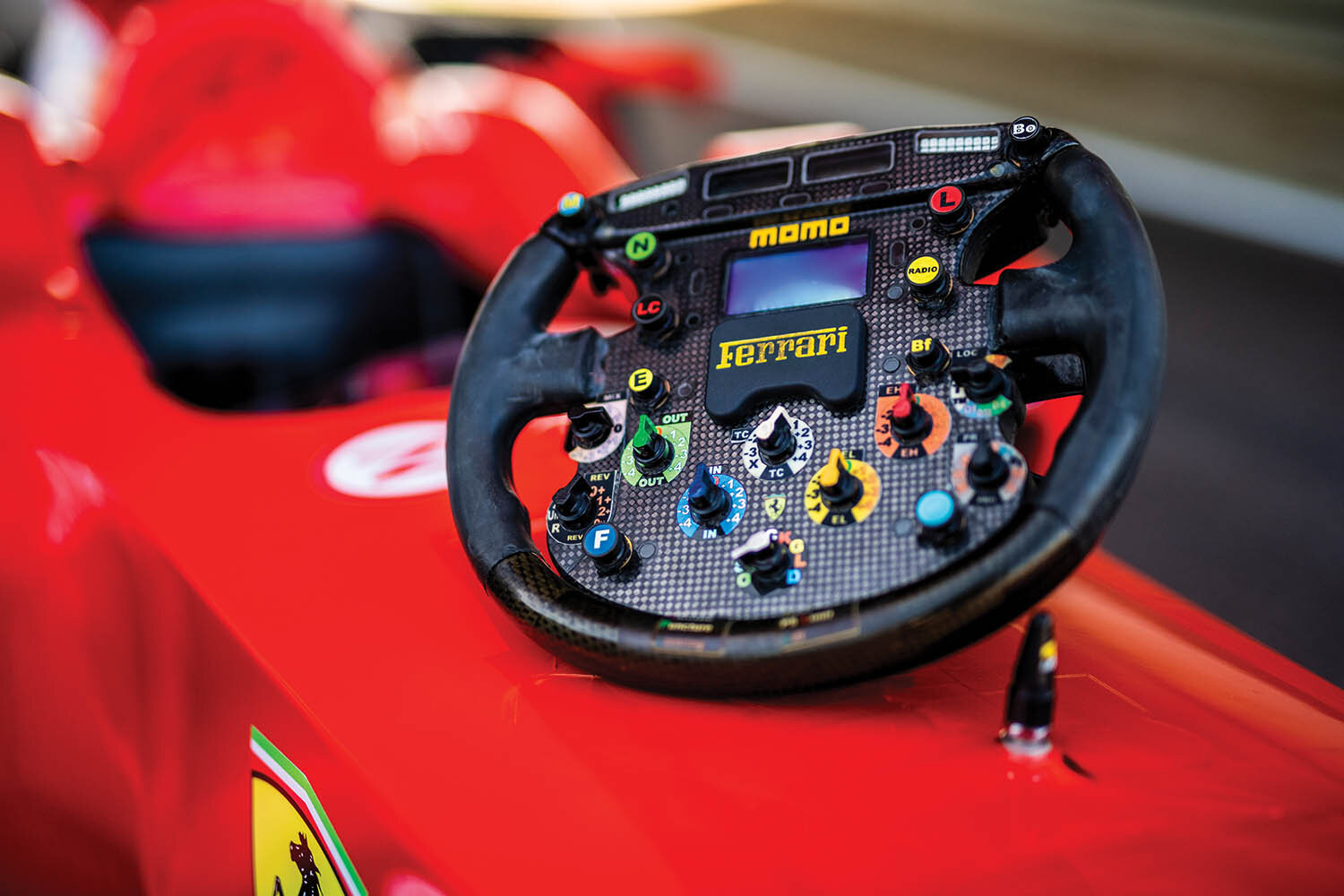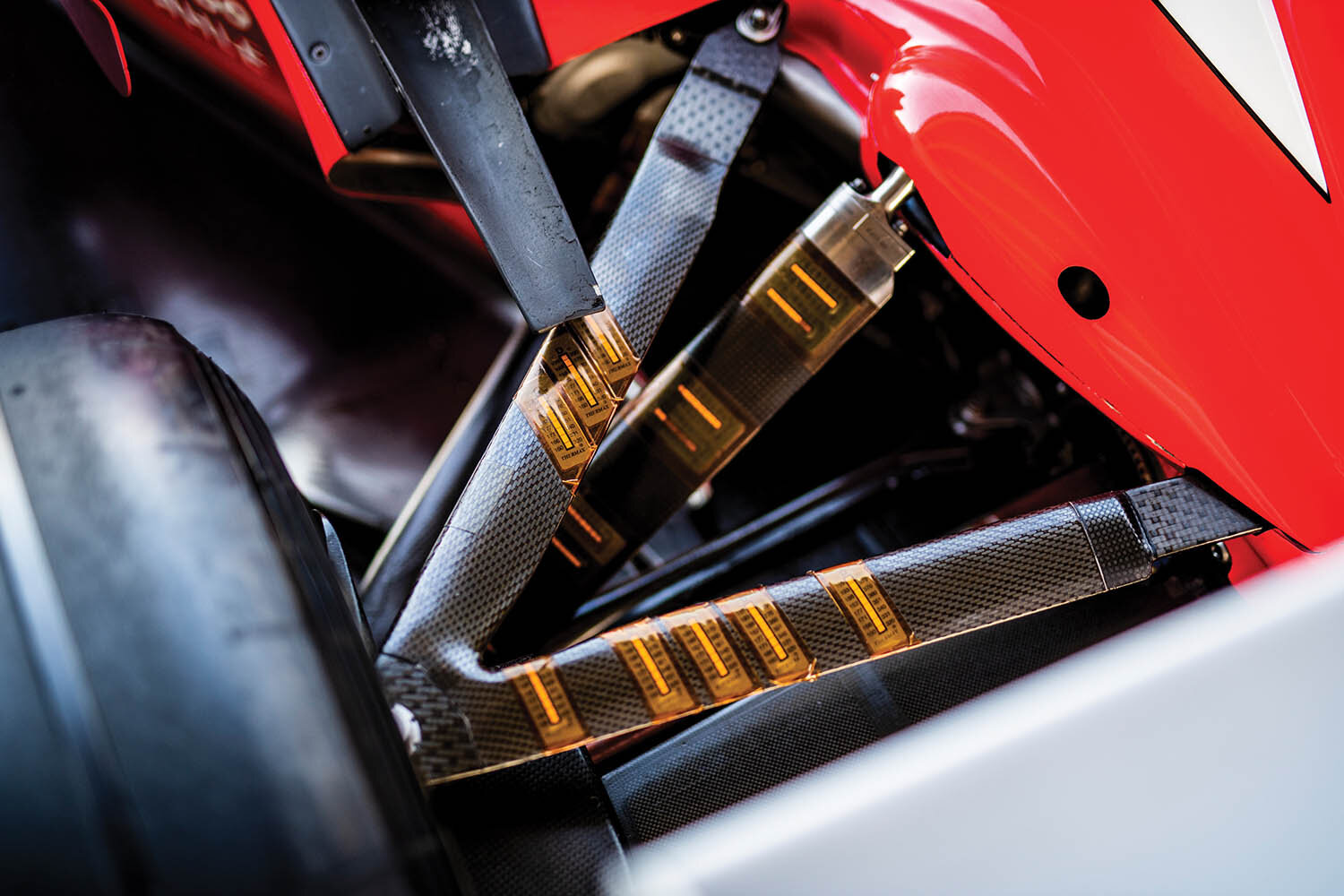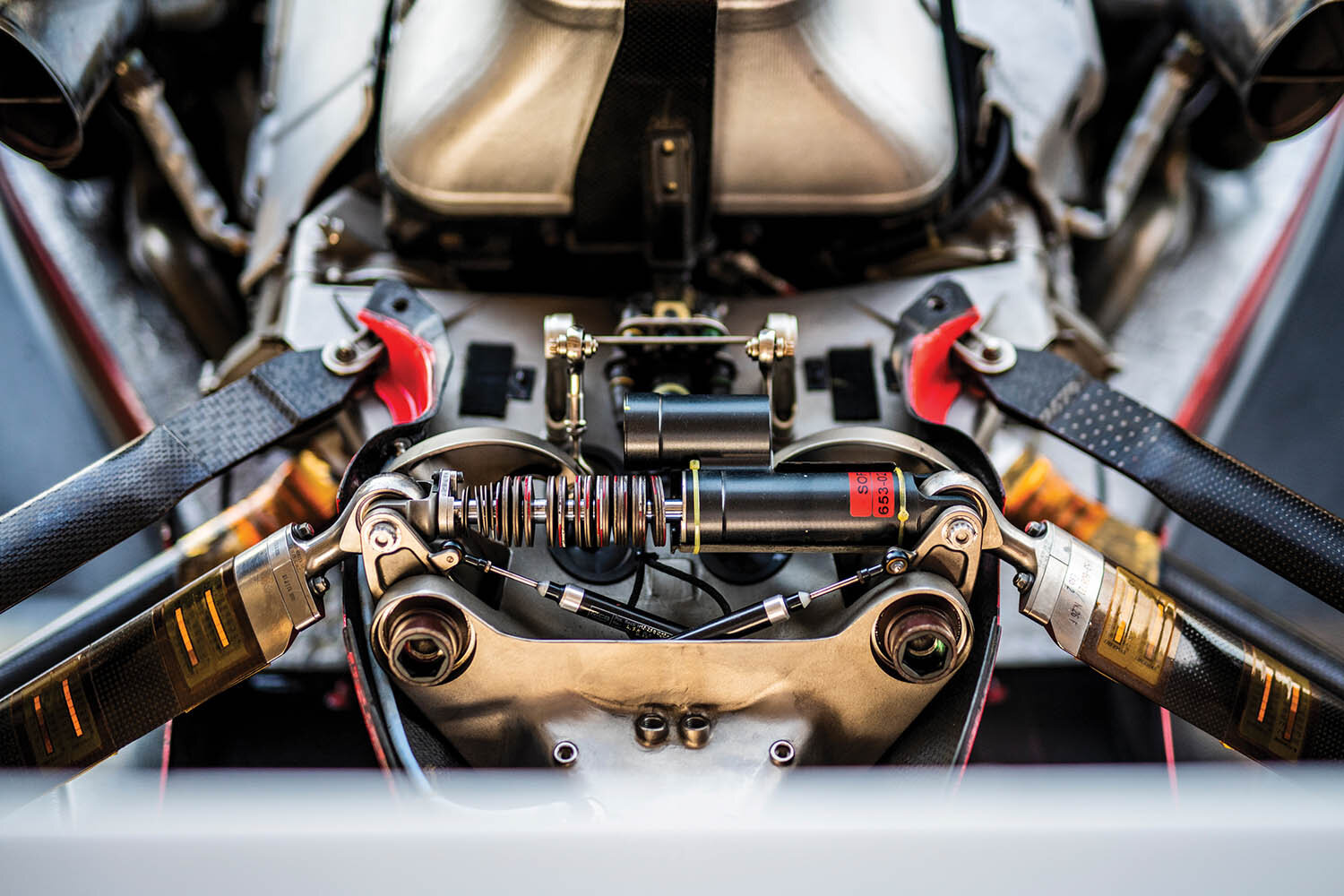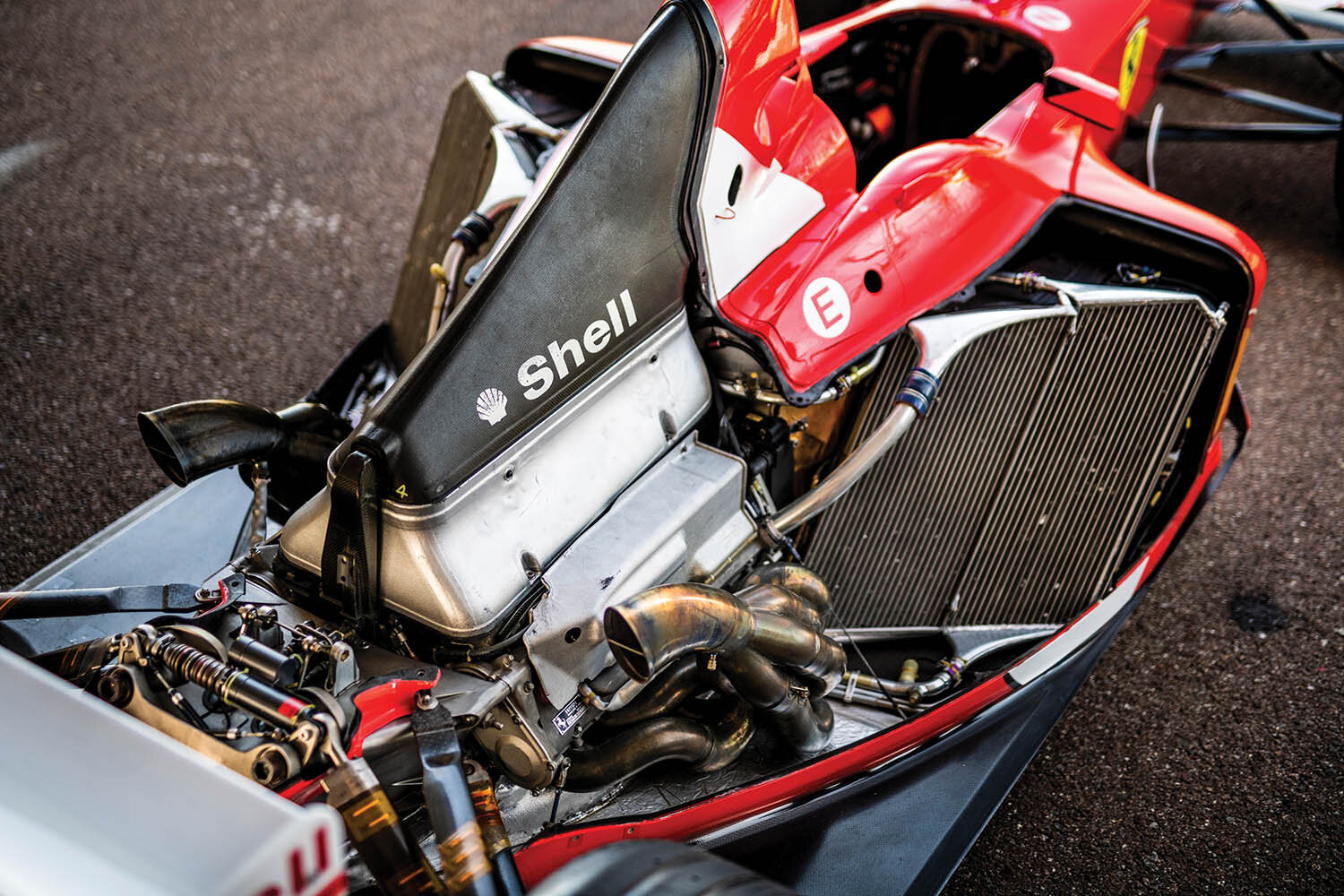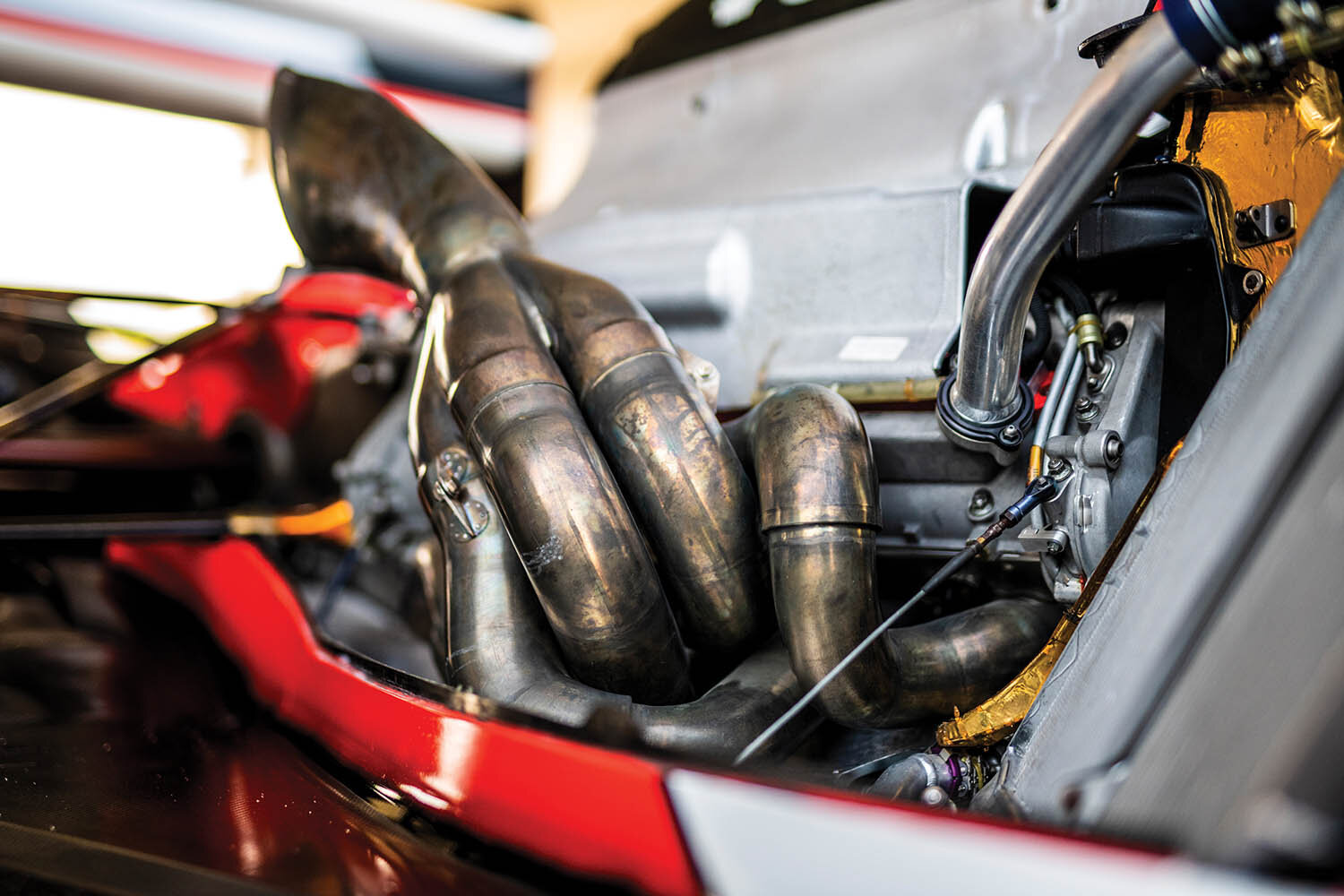Schumacher's dominant Ferrari F2002
For 1996, double World Champion Michael Schumacher was lured away from the Benetton team with which he had won back-to-back titles in 1994 and 1995, his passage somewhat eased by a two-year $60 million contract, not to mention the recent arrival at Ferrari of highly rated team principal Jean Todt and a seemingly limitless budget courtesy of long-time team sponsor Philip Morris. With former Benetton luminaries Rory Byrne and Ross Brawn joining Ferrari in 1997, the ‘Dream Team’ was falling into place.
In 2000 Ferrari enjoyed its finest season in a generation, with Schumacher taking his long-awaited first Drivers’ crown at the Scuderia, the team also securing the Constructors’ title. This was repeated in 2001, albeit in even more convincing fashion, with Schumacher scoring almost double the points of championship runner-up David Coulthard. Somewhat ominously for the opposition, it appeared that the Schumacher-Todt-Byrne-Brawn tour de force had truly come of age.
At the start of the 2002 season, Ferrari chose to persist with an updated version of the all-conquering F2001 model from the year before, only introducing the new F2002 from the third round of the championship in Brazil onwards. Although outwardly similar to the F2001, the F2002 was in fact a very different animal underneath: a new lightweight chassis, new 3.0-litre V10 engine, and revolutionary fused titanium gearbox were combined with optimised aerodynamics, cooling, and weight distribution.
This particular chassis, 219, first turned a wheel in anger at the official Formula One test held at the Circuit de Catalunya in March. Driven by Rubens Barrichello, the car covered some 265 laps over the four days, concentrating primarily on fine-tuning race setups and evaluating a variety of new Bridgestone tyre compounds. After a brief shakedown at Fiorano by test driver Luca Badoer, chassis 219 was sent to Imola for the San Marino Grand Prix in mid-April. Having qualified in 2nd place with Barrichello at the wheel, Schumacher having taken pole in chassis 220, the Scuderia effected a swap for the race, in which Schumacher took chassis 219 to an untroubled 18-second victory over his popular Brazilian teammate.
At the end of the month, focus shifted to the Spanish Grand Prix at Barcelona, where Schumacher was due to drive 219. In qualifying, Michael finished a comfortable three-tenths quicker than Barrichello to secure pole, although perhaps more telling was the fact that he was almost a second a lap quicker than the first non-Ferrari, his brother’s Williams, in 3rd place. After using the spare car for the race, Schumacher still managed to cross the line 35 seconds ahead of Montoya’s 2nd-placed Williams and gave the rest of the paddock serious cause for concern. After all, if that was the performance of the unfamiliar spare car, what would the likely margin of victory have been in his preferred 219?
The Austrian Grand Prix at the beginning of May once again saw Schumacher nominated to drive 219. Barrichello qualified on pole ahead of Ralf Schumacher; Michael qualified 3rd, and he proceeded to pull away from rest of the field from the start. Having dominated the race throughout, the controversial Ferrari policy of favouring their number one driver was implemented on the final lap, with Barrichello instructed to allow Michael past. With this, Schumacher had taken another significant step towards his championship hat trick with Ferrari, his fifth in total, whilst the F2002 continued its remarkable run of success: four races, four wins.
At Monaco, Schumacher used chassis 221 to qualify 3rd behind pole sitter Montoya and Coulthard’s McLaren, although he reverted to using 219 for the race. A predictably tough race ensued, as is customary from anywhere other than pole position in the principality, and Coulthard drove an inspired race for McLaren to take the win, just over one second in front of Michael.
The next race outing for 219 would be the French Grand Prix at Magny-Cours, where victory would secure Schumacher his fifth world title and a place amongst the sport’s greats. After a fraught race, which included a drive-through penalty and a controversial move on Kimi Raikkonen’s McLaren in the latter stages, Michael crossed the line to take the title with six rounds of the championship still remaining.
Thereafter, 219’s final two race outings would be with Barrichello at the wheel, Schumacher opting to race chassis 221 and 223 for the remainder of the season. At the German Grand Prix at Hockenheim, at the end of July, Barrichello took a hard-fought 4th place, whilst Schumacher secured yet another victory, his first in a Ferrari in front of his adoring home fans. Meanwhile, at Spa, Barrichello reaffirmed the F2002’s undoubted position as the class of the field with another 2nd place behind Schumacher, the 3rd-placed Williams of Montoya being some sixteen seconds further back at the flag.
By the end of the 2002 season, the F2002 had been responsible for, at that point, the most dominant World Championship performance ever seen. Schumacher had taken 11 wins (of which all but one were in the F2002, and three in chassis 219), and his margin of victory of 67 points over Barrichello was a record under the old points-scoring system, which would be replaced for 2003. Perhaps most tellingly of all, Ferrari’s Constructors’ Championship haul of 221 points for the year precisely equalled the combined tally of all ten remaining teams.
RM Sotheby’s will be offering this 2002 Ferrari F2002 at their upcoming Abu Dhabi Sale held on the 30th November at the Abu Dhabi Formula 1 Grand Prix. It’s estimated value is between $5.5m - $7.5m, with a portion of the proceeds going to the Keep Fighting Foundation.
Photos: Remi Dargegen ©2019 Courtesy of RM Sotheby's

